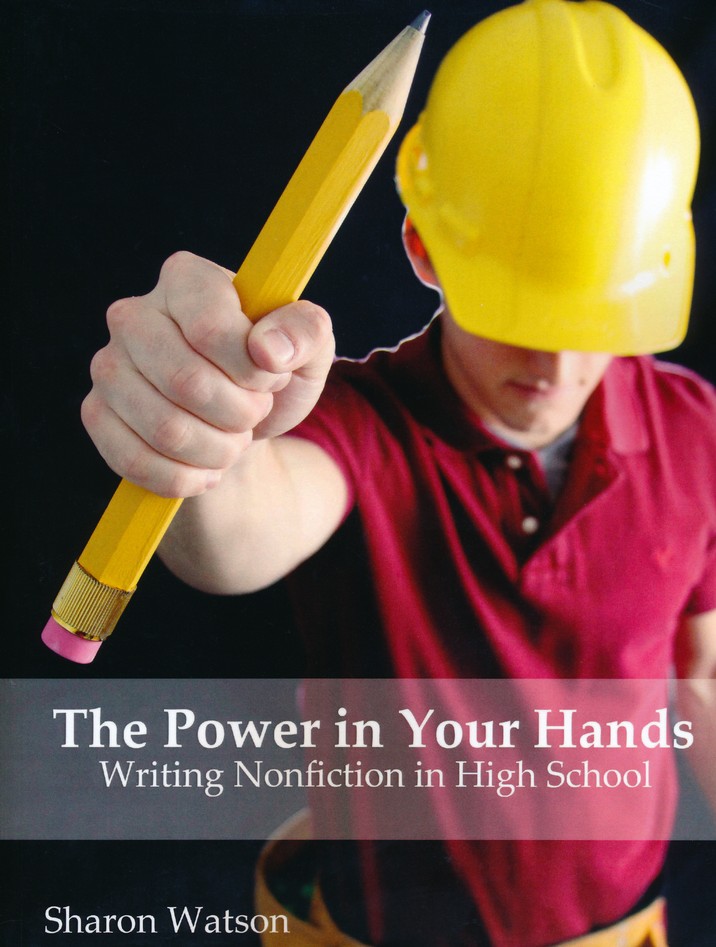Many students tell me that after they do the hard work of coming up with an idea, they do not know what to put in the paragraph or even how to write the paragraph.
Is this an issue for you as well? Could you use a little help in this area?
{Looking for the MIDDLE SCHOOL version of this tutorial? >>}
 If so, you may want to use the chart below to organize the paragraphs in the body of your essay. In this prompt, you’ll find an empty chart and then one that is filled in. Then you’ll read the paragraph created from the chart.
If so, you may want to use the chart below to organize the paragraphs in the body of your essay. In this prompt, you’ll find an empty chart and then one that is filled in. Then you’ll read the paragraph created from the chart.
Let’s go . . .
Here’s the empty chart. You can download a PDF of it here.
The Empty Chart
And here is the chart filled out with the ideas for one paragraph from an essay on . . . well, I’ll let you read it. You can download a PDF of the completed chart here.
The Filled-in Chart

The Paragraph from the Chart
Here is the paragraph all written out:
Constructing a city street through Porcupine Park will severely diminish our few chances to enjoy nature and the rare green spaces in our city. The addition of traffic noises, the smell of exhaust, and the inevitable litter will pollute the once-peaceful park. And if that weren’t troubling enough, the “two-mile trail will be downsized to 1.2 miles,” according to the city’s Website, shipleyatyourservice.org, and we will lose the stand of irreplaceable old-growth oak trees. A park, by its very definition, is supposed to be a place where people can take advantage of their natural surroundings and enjoy the grass, streams, trees, and other natural beauties unavailable in the city. This proposed street breaks the original intent of a park’s very purpose and takes something of immense value from us that can never be restored.
Notice how the main idea, “Constructing a city street through Porcupine Park will severely diminish our enjoyment of nature,” becomes the basis of the topic sentence and is summed up in the last sentence.
A summation is optional, but this student chose to hit the topic again to emphasize it.
For the most part, each paragraph in the body of your essay will need a topic sentence, other than the intro and conclusion. Then, in two or more sentences, you’ll explain or prove your topic sentence. These sentences answer “Why?” or “Prove it!”
You can use examples, facts, logical statements, true stories, and so on, to support your topic sentence. In the park example, this student uses statements about pollution and the intent of a park, along with one fact taken from the city’s Website.
If you are writing an essay, you’ll want to fill out one chart for each paragraph in the body of your essay. Most essays have at least three paragraphs in the body.
After you fill out one chart for each of your paragraphs, move the charts around to see which order you want to put your paragraphs in. When you have decided on the order, write an introduction, then your three paragraphs from your charts, and then a conclusion.
Now it’s your turn: Choose from the following options. Your topics can be silly or serious.
- Choose a topic you feel strongly about and that you are AGAINST. Next, fill in the chart as this student has done, giving reasons, examples, and facts why you are against it. Finally, write your paragraph from your chart.
- Choose a topic you feel strongly about and that you are FOR. Next, fill in the chart as this student has done, giving reasons, examples, and facts to show why you are for it. Finally, write your paragraph from your chart.
To see how to use the chart on a middle school level, click here.
Some of the park paragraph is taken from an example in The Power in Your Hands: Writing Nonfiction in High School.
Teachers, connect with Sharon on Facebook or Pinterest!
 Are your writers struggling? Do you wish you could figure out why your children won’t write? Would you love to have a peaceful writing class experience?
Are your writers struggling? Do you wish you could figure out why your children won’t write? Would you love to have a peaceful writing class experience?
Help your struggling writers—and you!—by identifying five hurdles to writing. Then learn practical actions you can take against those hurdles.
This article by me in The Old Schoolhouse magazine is also loaded with links to other helpful posts that will give you and your writers some welcome relief.
Click here to drain some of the tension from your writing class
Frustrated that your students don’t finish an essay or don’t know the steps to complete one? Worry no more! Click here for my latest article in The Informer about a super-practical writing schedule you WILL use!













